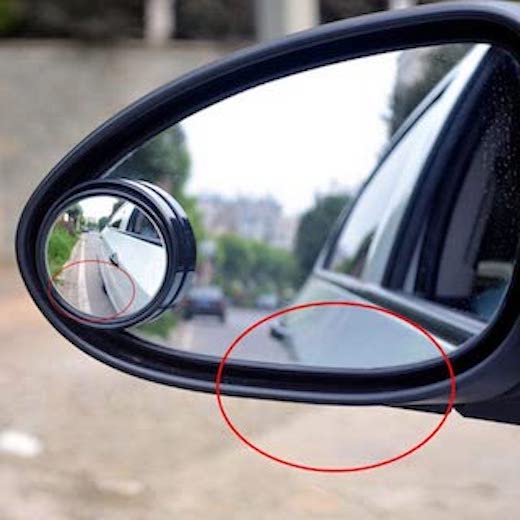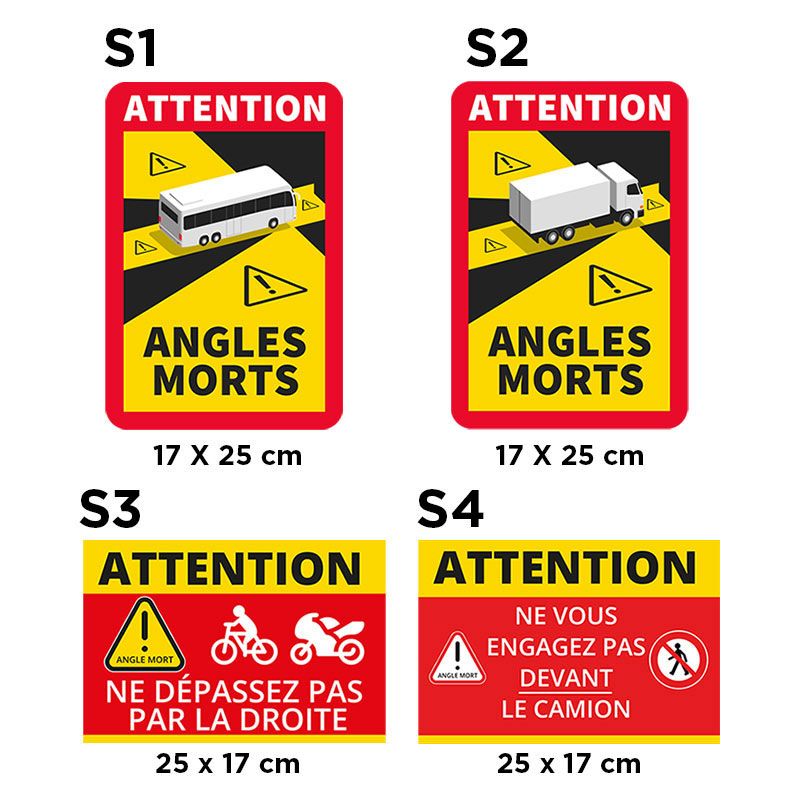Dead Angle Of A Car: The Ultimate Guide To Staying Safe On The Road
Driving is an everyday activity, but did you know that the dead angle of a car can be a silent danger lurking right beside you? It's not just about adjusting your mirrors or trusting your instincts; it's about understanding how blind spots work and taking proactive steps to minimize risks. Today, we'll dive deep into this crucial aspect of driving safety, ensuring you're equipped with the knowledge to protect yourself and others on the road. So buckle up, and let's get started!
When it comes to driving, there's more than just steering and braking involved. You've got to be aware of what's happening around your vehicle at all times. The dead angle of a car, or what most people call "blind spots," plays a massive role in road safety. These areas are essentially invisible to your mirrors, and if not properly managed, they can lead to accidents.
Now, you might be thinking, "Is it really that big of a deal?" The answer is a resounding yes. Understanding blind spots isn't just about avoiding minor fender benders; it's about preventing serious accidents that could change lives forever. Let's explore this topic further and uncover the secrets to safer driving.
- Mac Whirl Lipstick Review Swatches Is It Still A Musthave
- Akshat Gupta Author Life Wives And Net Worth
What Exactly is a Dead Angle of a Car?
Let's start with the basics. The dead angle of a car refers to the areas around your vehicle that aren't visible through your mirrors. These zones are blind spots, and they vary depending on the type of car you're driving. For instance, larger vehicles like trucks and SUVs have bigger blind spots compared to compact cars. It's like having invisible zones around your car that you need to account for whenever you're changing lanes or reversing.
Why Blind Spots Matter
Blind spots matter because they can lead to accidents. Imagine you're changing lanes on a highway, and there's another car sitting in your blind spot. If you don't check over your shoulder, you could collide with that vehicle, causing serious damage or injury. It's not just about other cars, either. Cyclists, motorcyclists, and pedestrians can also easily get caught in blind spots, making the situation even more dangerous.
Factors Affecting Blind Spots
Several factors influence the size and location of blind spots in your car. Understanding these factors can help you better manage them.
- Hanuman Movie 2024 Download Streaming Guide 5movierulz Alternatives
- Movierulz 2025 Latest Telugu Movies Where To Watch Them
Vehicle Size and Type
As mentioned earlier, the size of your vehicle plays a significant role. Larger vehicles like trucks and SUVs have bigger blind spots due to their height and width. On the other hand, compact cars have smaller blind spots, but they're still present and should not be ignored.
Mirror Adjustments
Proper mirror adjustments are crucial in minimizing blind spots. Your side mirrors should be set so that you can see just a sliver of your car's rear corner. This positioning helps you see more of the area around your vehicle, reducing the size of your blind spots.
How to Minimize Blind Spots
Minimizing blind spots is all about taking proactive steps to ensure you're aware of your surroundings at all times.
Adjust Your Mirrors Properly
- Set your rearview mirror to give you a clear view of what's behind you.
- Adjust your side mirrors so that you can see just a sliver of your car's rear corner.
- Make sure your mirrors are clean and free of obstructions.
Use Blind Spot Mirrors
Blind spot mirrors are small convex mirrors that you can attach to your side mirrors. They provide a wider field of view, helping you see areas that would otherwise be hidden. While they're not a replacement for proper mirror adjustments, they can be a helpful addition to your driving arsenal.
Technology to Help with Blind Spots
Modern cars come equipped with advanced technology designed to assist drivers in managing blind spots. Let's explore some of these innovations.
Blind Spot Monitoring Systems
Blind spot monitoring systems use sensors to detect vehicles in your blind spots. If a car is detected, a warning light will appear in your side mirror, alerting you to the presence of another vehicle. Some systems even provide audible warnings or vibrate the steering wheel to get your attention.
Rearview Cameras
Rearview cameras are another technology that can help with blind spots, especially when reversing. These cameras provide a clear view of what's behind your vehicle, making it easier to park and maneuver in tight spaces.
Safe Driving Practices
While technology can assist, safe driving practices are still essential in minimizing blind spots and ensuring road safety.
Check Over Your Shoulder
Even with proper mirror adjustments and advanced technology, it's crucial to check over your shoulder before changing lanes or merging. This simple action can help you spot vehicles or obstacles that might be hidden in your blind spots.
Be Aware of Other Drivers' Blind Spots
It's not just about your blind spots; you also need to be aware of other drivers' blind spots. Avoid lingering in these areas, especially when driving alongside larger vehicles like trucks. If you can't see the driver's face in their side mirror, chances are they can't see you either.
Statistics and Studies on Blind Spot Accidents
Blind spot accidents are more common than you might think. According to the National Highway Traffic Safety Administration (NHTSA), there are approximately 840,000 blind spot accidents in the United States each year. These accidents result in around 300 fatalities annually. These statistics highlight the importance of understanding and managing blind spots to prevent such tragedies.
Training and Education
Education plays a vital role in improving road safety. Many driving schools now include blind spot awareness in their curriculum, teaching new drivers how to manage these invisible zones effectively. Additionally, online resources and tutorials are available for those looking to enhance their driving skills.
Online Resources
- Check out the NHTSA website for tips on blind spot safety.
- Watch YouTube tutorials on proper mirror adjustments and blind spot management.
- Join online forums where experienced drivers share their tips and tricks.
Conclusion: Taking Action for Safer Roads
Understanding the dead angle of a car and how to manage blind spots is crucial for ensuring road safety. By adjusting your mirrors properly, using technology, and practicing safe driving habits, you can minimize the risks associated with blind spots. Remember, it's not just about protecting yourself; it's about protecting everyone else on the road.
So, what are you waiting for? Take action today! Adjust your mirrors, invest in blind spot mirrors, and educate yourself on the latest safety technologies. Share this article with your friends and family to spread awareness about blind spot safety. Together, we can make our roads safer for everyone.
Table of Contents
- What Exactly is a Dead Angle of a Car?
- Factors Affecting Blind Spots
- How to Minimize Blind Spots
- Technology to Help with Blind Spots
- Safe Driving Practices
- Statistics and Studies on Blind Spot Accidents
- Training and Education
- Conclusion: Taking Action for Safer Roads



Detail Author:
- Name : Anibal Dibbert
- Username : charlotte27
- Email : marlon20@yahoo.com
- Birthdate : 1984-11-19
- Address : 54176 Rhiannon Manors Clarkland, LA 67513
- Phone : 1-845-530-8916
- Company : Corkery-Willms
- Job : Producer
- Bio : Recusandae omnis pariatur odit enim. Ut laudantium ducimus consequatur quo et voluptate non. Minima sit cupiditate non. Accusamus odit laboriosam sed veritatis reiciendis quae voluptate.
Socials
linkedin:
- url : https://linkedin.com/in/novellamacejkovic
- username : novellamacejkovic
- bio : Dolore autem aperiam mollitia ut et beatae.
- followers : 3910
- following : 880
twitter:
- url : https://twitter.com/nmacejkovic
- username : nmacejkovic
- bio : Vitae quibusdam repellat fuga quo officiis in. Qui natus quam odit. Eum rerum magnam laboriosam velit at aut.
- followers : 3557
- following : 450
facebook:
- url : https://facebook.com/nmacejkovic
- username : nmacejkovic
- bio : Quos placeat necessitatibus est debitis.
- followers : 2067
- following : 368
instagram:
- url : https://instagram.com/macejkovic1971
- username : macejkovic1971
- bio : Qui fuga hic dolores asperiores. Delectus qui modi in et magnam dicta. Qui et sit dicta est.
- followers : 132
- following : 347